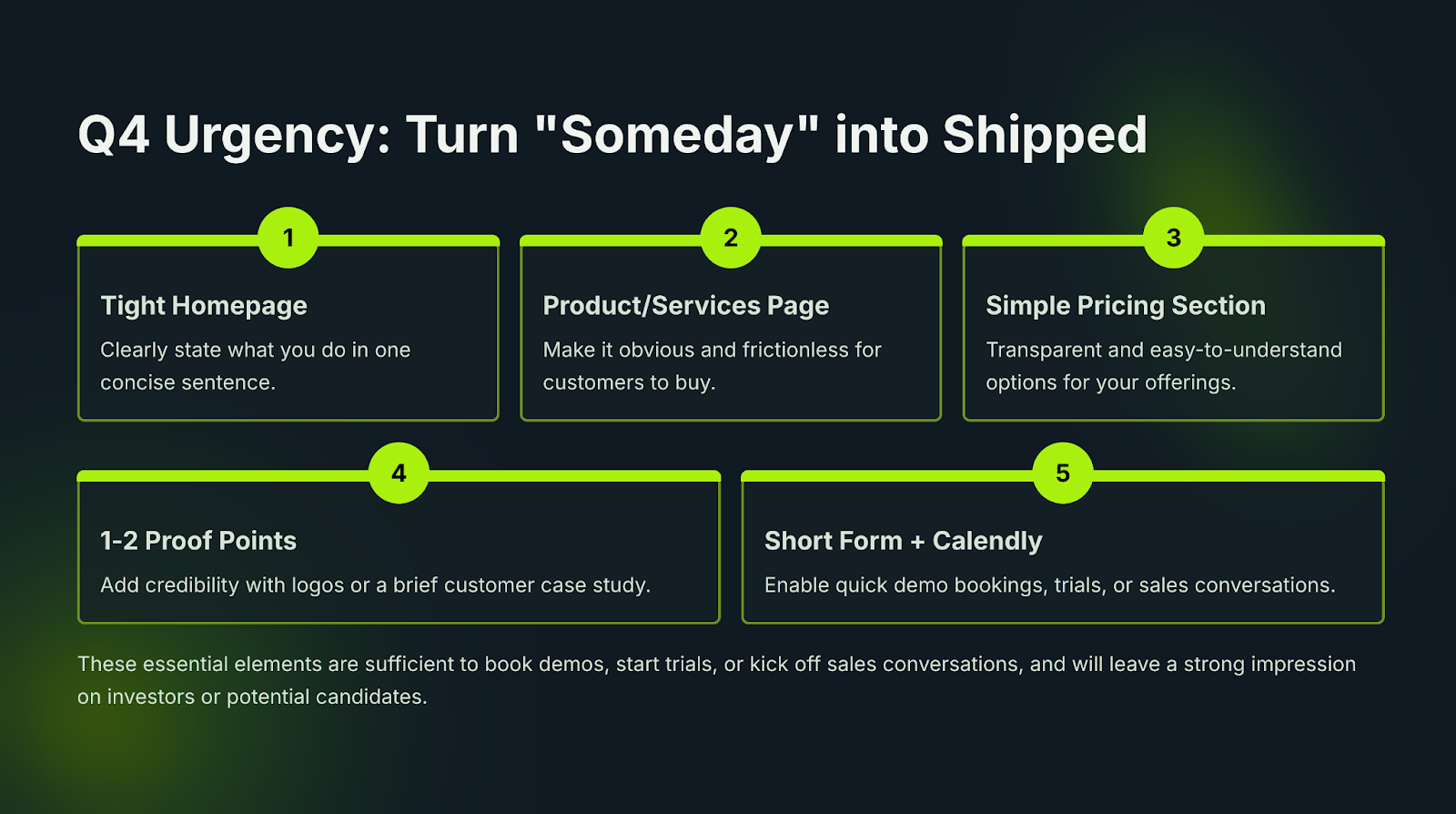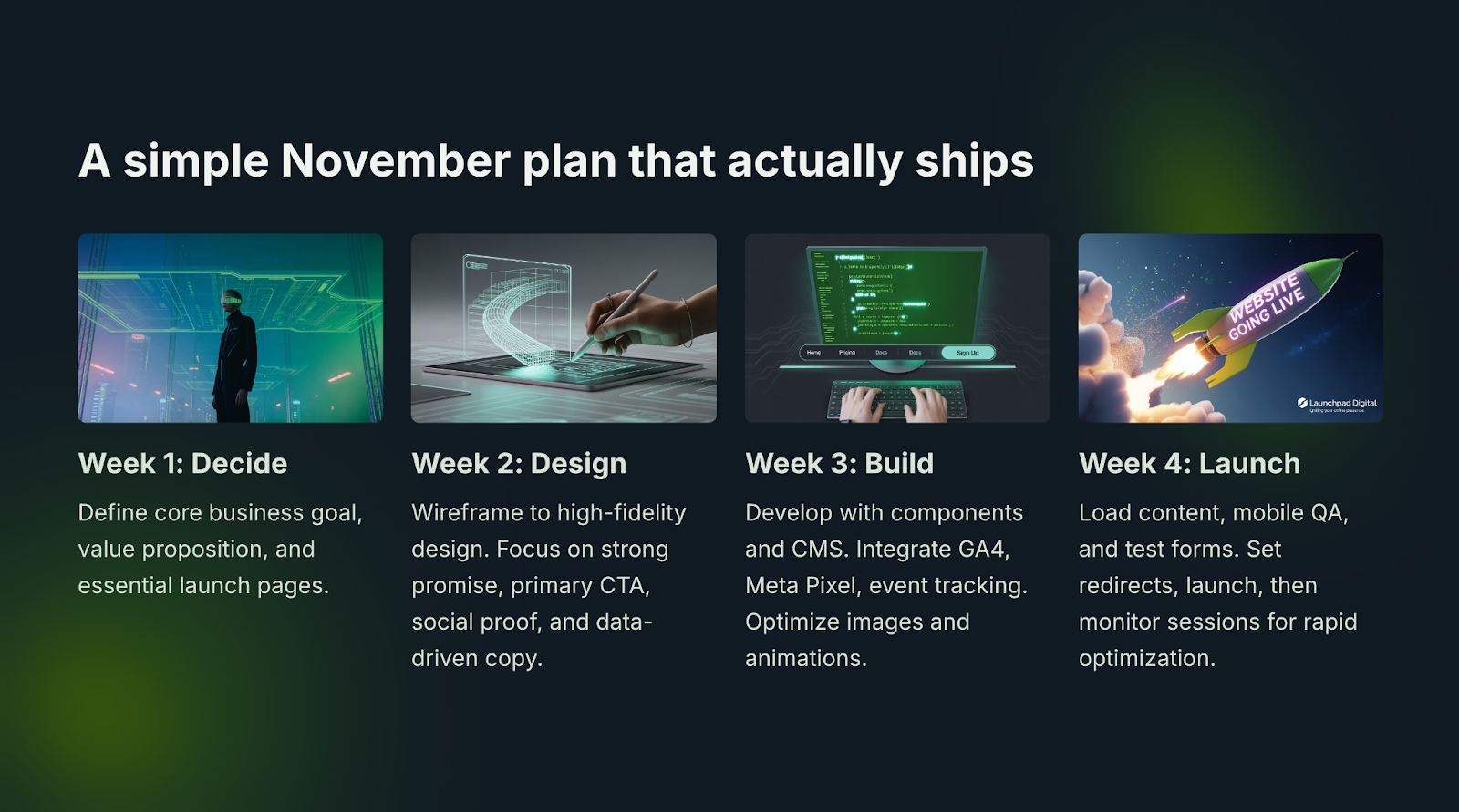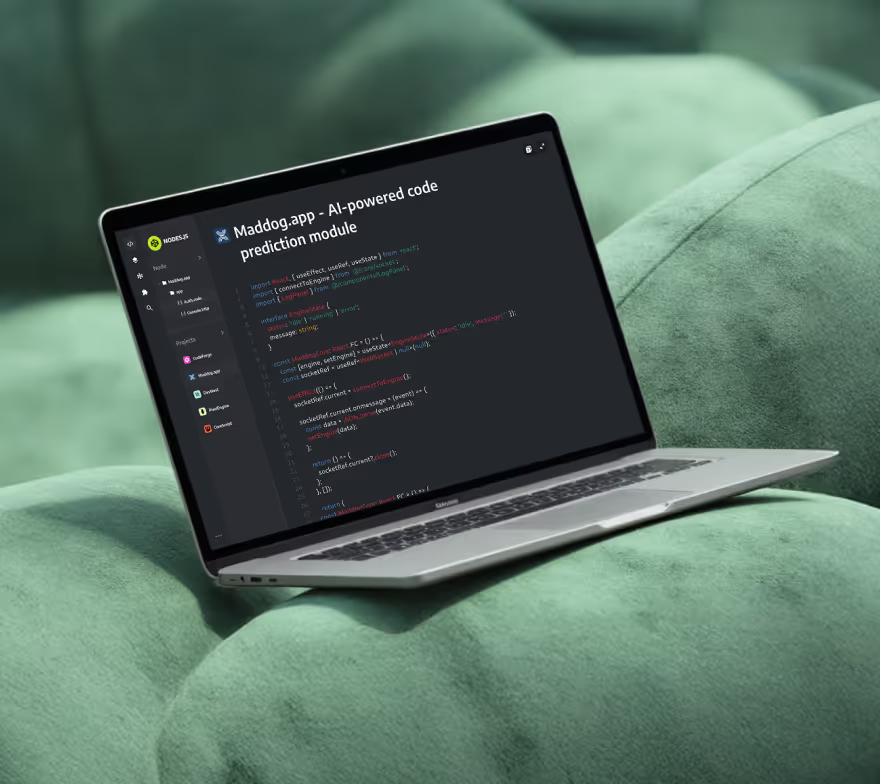











Recognitions
projects
Services

Why November Is the Best Month to Launch Your Startup Website



If you’re a founder telling yourself “we’ll ship in January,” you’re not alone. But here’s the uncomfortable truth: January is loud, crowded, and expensive in attention. November isn’t. It’s focused. Budgets are still warm, boards want tangible progress, and your team can get something real into the world before the year closes.A November launch buys you three levers most startups don’t use: urgency (decisions actually get made), momentum (you enter Q1 with signal, not theory), and focus (you ship the pages that move the metric, nothing else).
1) Q4 urgency turns “someday” into shipped

Board updates, budgeting, hiring plans — November concentrates decision-makers. “Let’s do it next quarter” is harder to say when the calendar is closing. That pressure is good pressure. It forces clarity: one goal, one primary CTA, one clean story.
What ships in November: a tight homepage that says what you do in one sentence, a product/services page that makes it obvious how to buy, a simple pricing section, 1–2 proof points (logos, a short case), and a short form + Calendly. That’s enough to book demos, start trials, or kick off sales conversations. It’s also enough to impress an investor or a candidate.
2) December is a calm burn-in window
Most teams hit a soft content/code freeze mid-December. That’s not a blocker — it’s an advantage. Launch in November and you get:
- A quiet month to fix small issues without firefighting.
- Clean data over the holidays (what users click, where they bounce).
- A stable site when the January noise starts.
By the time your competitors are arguing about hero headlines on 10 January, you’ll already have 6–8 weeks of analytics and a backlog of confident, small wins.
3) You start 2026 with momentum, not promises
Hiring, fundraising, partnerships — they all start on your website. Shipping now gives you:
- Real before/after numbers to show (“bookings up”, “time on page up”).
- A credible brand moment for outreach.
- A site you can edit without devs, so marketing can move independently.
4) Why Webflow makes November realistic
You don’t need a big engineering push to get this done. Webflow gives you:
- Speed — design-to-live in weeks.
- Control — marketing can update copy, pages and CMS without tickets.
- Reliability — secure hosting, no plugin roulette, built-in performance.
If you want the fastest path end-to-end, our Startup Launch Pack bundles strategy, UX/UI and Webflow build into one sprint. Launch Faster. Launch Right.
A simple November plan that actually ships

Week 1 — Decide
Pick the business goal (book demos / start trials / request quote). Write the one-line value prop. List the pages you need, not the ones you might want later.
Week 2 — Design for conversion
Wireframe → high-fidelity. Above the fold: promise + primary CTA. Add proof (logos, one quote, one short result). Keep copy tight; numbers beat adjectives.
Week 3 — Build in Webflow
Components, CMS, forms, responsiveness. Connect GA4 + Meta Pixel. Set up events for Lead and Schedule. Optimise images; keep animations light.
Week 4 — Content & launch
Load content, QA on mobile, test forms/Calendly, set redirects, ship. Watch recordings/heatmaps for the first 200 sessions and fix the obvious stuff.
What “good enough” looks like for v1
- Headline anyone can repeat after one glance.
- One primary CTA repeated consistently.
- Proof early (logos, 1–2 metrics, a human quote).
- Pricing “from” (to set expectations without blocking contact).
- Short form + Calendly (make it easy to talk to you).
Perfection is the enemy of November. Clarity wins.
Two quick examples
Smarthost (short-term rentals): rebuilt the marketing site on Webflow, streamlined the path to enquiry, and lifted owner sign-ups with a faster, clearer flow.
Askflow (AI quiz/chatbot): launched a clean, conversion-ready site in four weeks to support global growth and onboarded 140+ brands with messaging that finally matched the product.
Common founder questions
Is November too late to start?
No. With a focused scope, you can ship a solid v1 in 2–6 weeks.
What if we’re on WordPress/Wix?
Migrate the essentials and set redirects. Keep it lean; expand in January.
Will we still be able to update over the holidays?
Yes. Webflow’s editor lets non-technical teammates publish safely.
If the calendar says “ship”, act like it
If you want a partner who can plan, design and build this November, we’re Fourmeta — an Official Webflow Partner with 300+ launches. We build beautiful, fast, conversion-ready sites your team can update without code.
Next step: Launch Faster. Launch Right — grab a free 30-minute strategy call and we’ll map your fastest path to “live.”




.avif)





















.avif)



